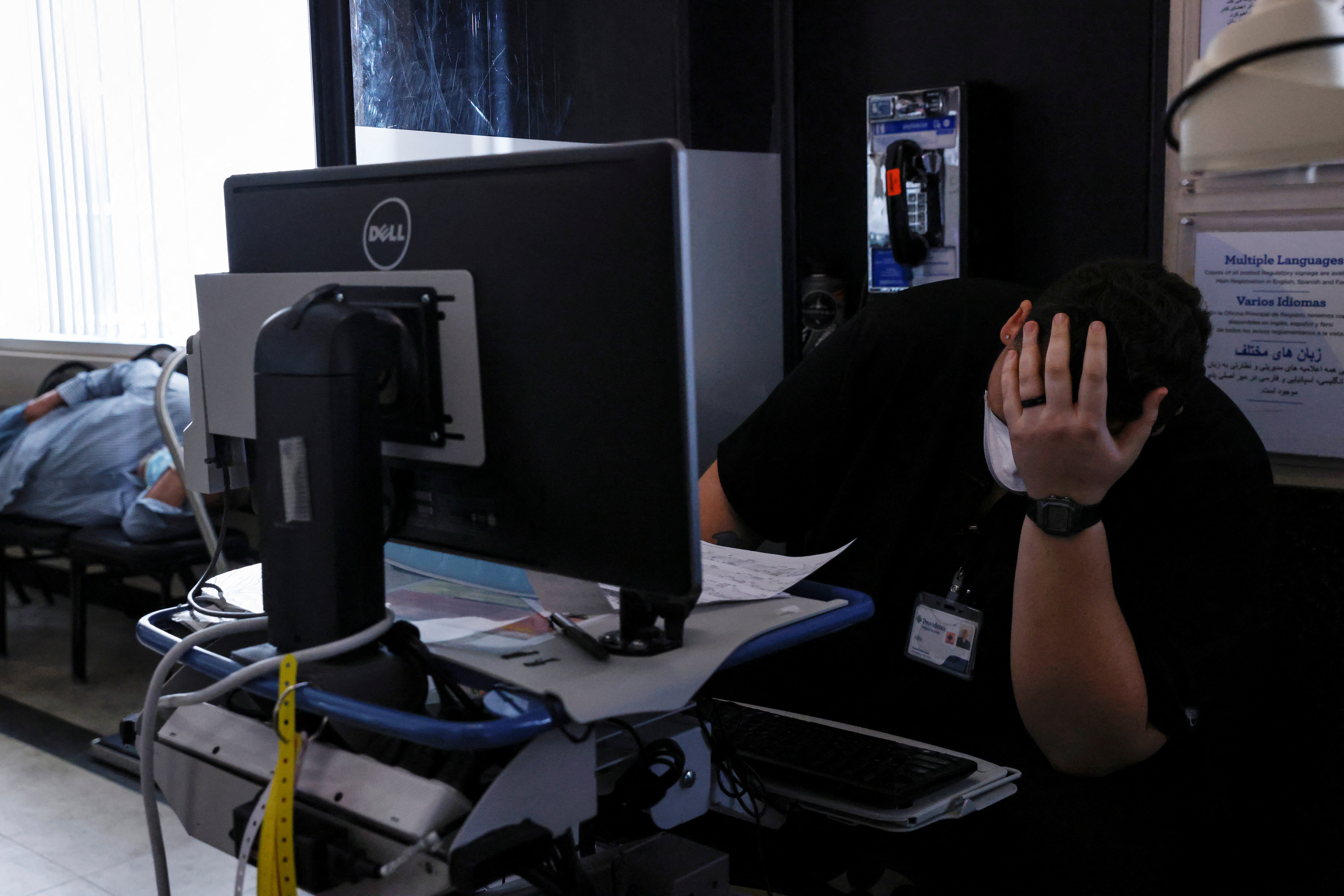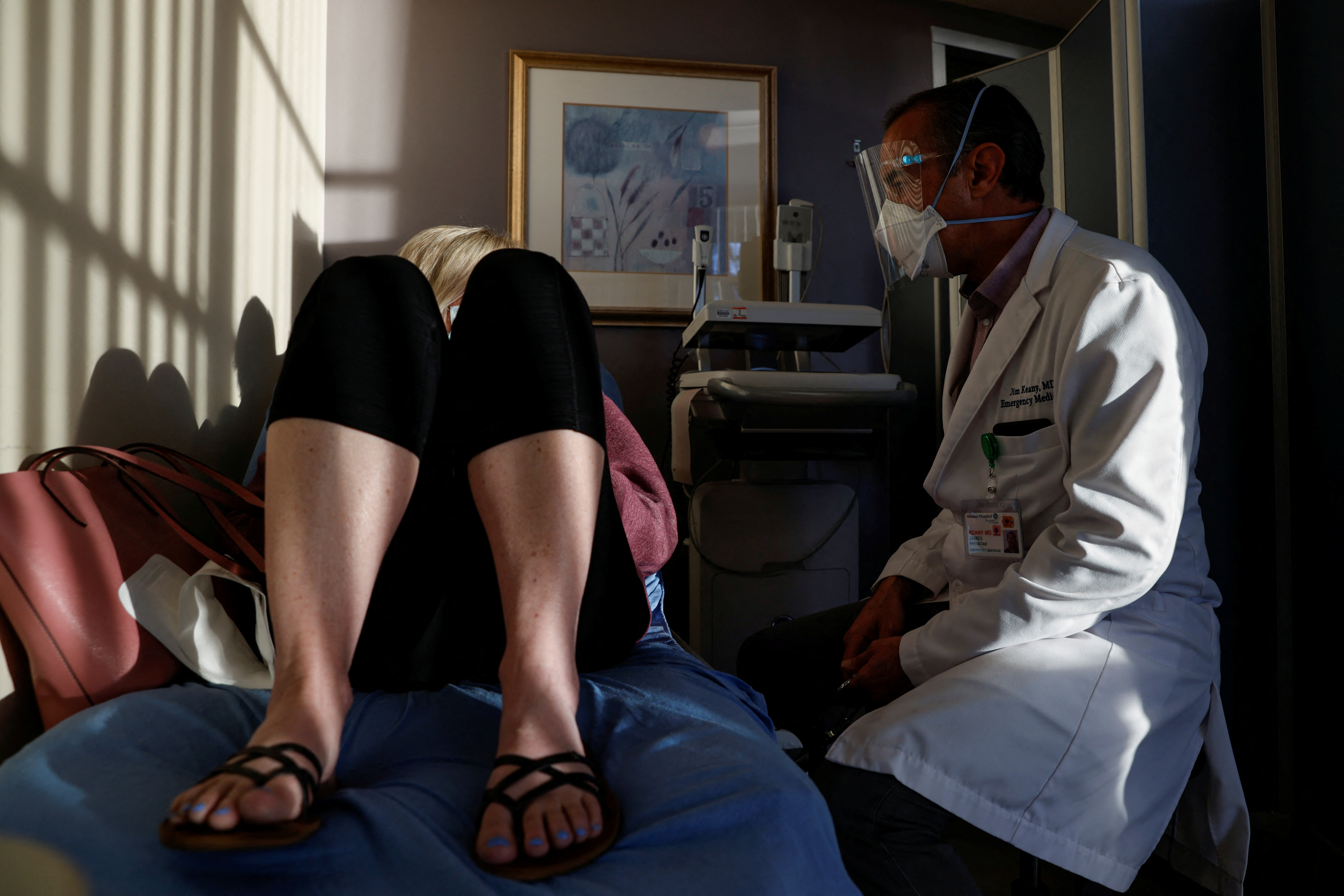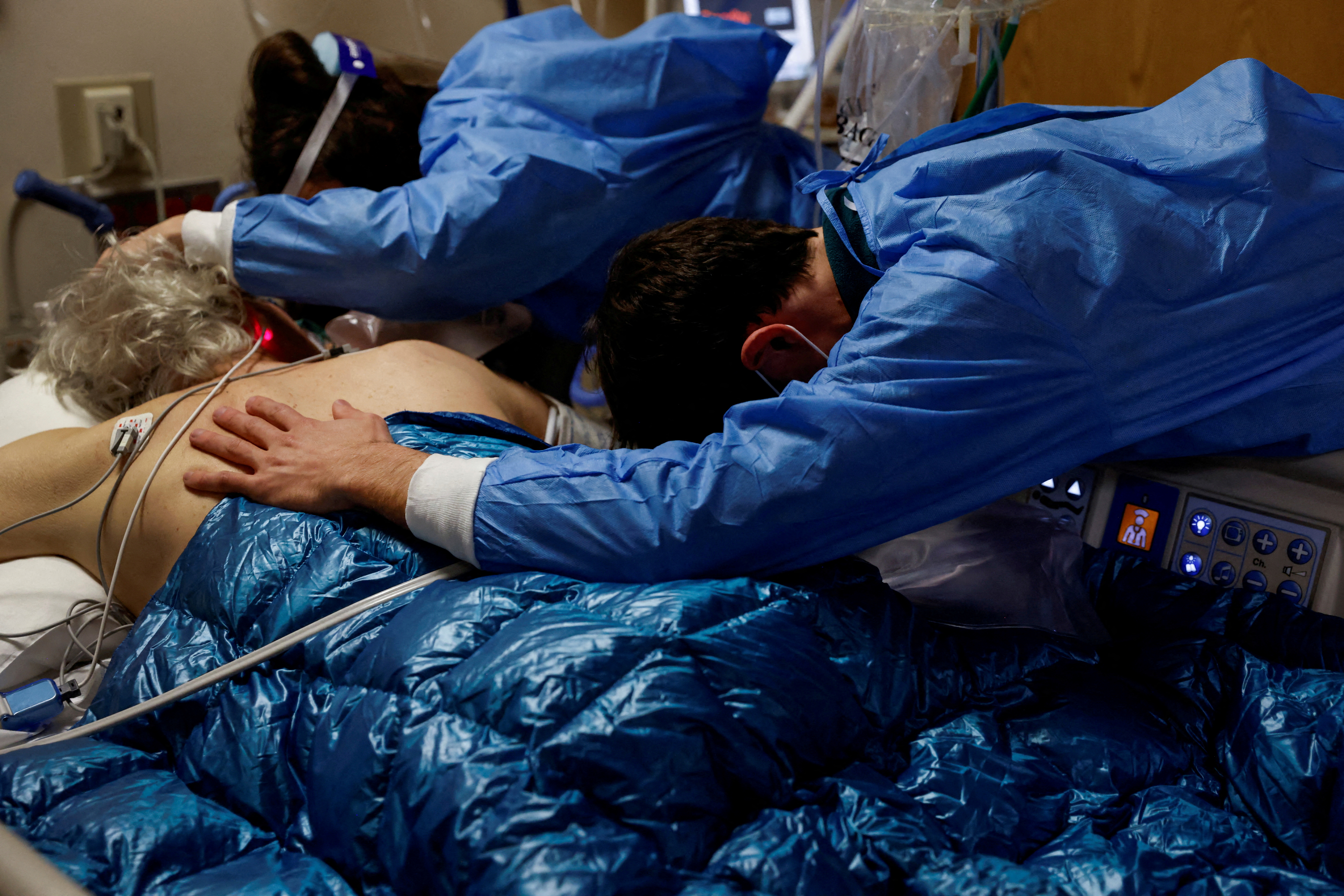The joke will be on them when they find out the cure really is in feces.
What is this?
I’m actually surprised that we haven’t seen many more of these types of reports for the better part of the last year, but most people taking advantage of such opportunities, are probably doing so on a much smaller scale.
Something that should be on the poster for why this pandemic is still going.
Did you notice the mask mandate was pretty much ignored at the Rams Niners game yesterday? Including by both mayors, the governor and owners box. I did see DiCaprio wearing a chin mask though. The SB is handing out KN95 masks to every attendee. Wonder if they’ll get 25 percent compliance.
Covid vaccination requirements for transplant candidates are not addressing theoretical concerns. Researchers analyzing outcomes of solid organ transplant patients have found that more of them with Covid infections at the time of transplantation died in the hospital, more required mechanical ventilation, and more required time in ICUs than patients not infected.
Another consideration involves donor families. The decision to donate an organ can be excruciating, as most viable organs become available when an otherwise healthy person dies suddenly. The grieving family may have only a matter of hours after it is informed of the death of their loved one to decide whether to donate organs. In many instances, families agree to this because they know they can contribute to extending the lives of others who would perish for lack of organs.
Families who make decisions to donate are owed rationing policies that make the most out of their gifts. A family would in all likelihood feel aggrieved if the organ they agreed to donate went to a candidate with less of a chance to benefit than others, especially when those chances were diminished by a personal decision not to vaccinate.
Now that even the vaccinated are getting COVID this seems more than ever like a very good thing. Yes, some anti-vaxxers will say “I don’t need the shot–if I get sick I’ll just take this medication.” But those folks are not going to get vaccinated anyway, I think.
A milestone.
Comirnaty (Pfizer) and now Spikevax. Haha.
I wonder if we will ever know how many deaths were deaths with COVID and how many were deaths from COVID? I know, I know, that sounds like something an anti-vaxxer would say, but cause of death is often a very difficult thing to measure and to keep track of statistically–not just with COVID. I wish we could know but we probably can’t.
Greatest nation on earth! Well, maybe not at stuff like this. Pretty much the worst. Aren’t authoritarian enough to force controls (which is a good thing). Aren’t altruistic enough to care for the good of the society through sacrifices/inconveniences. Not trusting enough to believe government/healthcare/etc. (and they haven’t done much to always earn that trust). Not smart enough to critically think outside of what the algorithms serve up. Too big to eliminate the disease (we aren’t a small island that can isolate).
But on the same token, we did have the ability, innovation, and could drive development of 3 vaccines (yes, other countries did too - UK had AstraZeneca, etc.). So there are pros and cons. It just seems that so much could have been avoided (and a lot was, but still left a lot to be desired). With 1M deaths, that’s 1 in every 330. Many (not all) are excess deaths. Sure, some would have died soon from other things including flu, pneumonia, etc. since a big portion were older or had other health conditions. But it did accelerate many people’s demise.
If we had 4% of deaths, it would be ~225k. We have ~908k. That’s a 683k delta/disproportionate gap.
We’ll never know. But one thing that I’ve always thought about this, regarding some folks saying “with all the comorbidities, he was going to die soon anyway”, is this: A person with terminal cancer who dies in a car crash still died from injuries in a car crash.
Let’s see if this has any legs
The magic term here…non clinical.
The clinical studies proved it didn’t work.
I’m gonna plug the KF94 mask right here. Find it more comfortable.
January 31, 2022
Reuters
At a California hospital, Omicron leaves staff exhausted in body, and sometimes spirit
By Shannon Stapleton
Alexandria Scott puts her hand over her head while patients wait in the emergency room waiting
area at Providence Mission Hospital in Mission Viejo, California.
“It’s been crazy,” said the 26-year-old technician as patients lie on seats a few feet away at Providence Mission Hospital Mission Viejo, waiting for beds. “We have had literally 24-hour wait times, 18-hour wait times, and it’s just people after people coming in.”
Orange County, in southern California, has one of the highest COVID-19 hospitalization rates in the state, where cases peaked about two weeks ago.
As in hospitals across the country, Omicron hit Providence Mission’s emergency room hardest with record numbers of patients. Fewer intensive-care beds are needed for this less-deadly variant, but it is still inflicting major lung damage on the unvaccinated, doctors say.
A patient lays on a medical gurney waiting to be seen in the emergency room waiting area.
The 504-bed acute care hospital triaged patients into modern surge wards and intensive care units that have been able to expand and contract to COVID-19 waves like few others in the country.
Staff, depleted by sickness and resignations, have taken a beating. Many say they have caught COVID-19 twice, have had little time to process hundreds of coronavirus deaths, and face tense moments with patients and families in a county known for its political conservatism, according to about a dozen doctors and nurses who spoke to Reuters.
“We responded, but it was overwhelming, it nearly broke all of us,” said emergency room doctor Jim Keany. Many of his colleagues, Keany said, are exhausted, see no end to the pandemic and have quit.
Emergency room doctor Jim Keany treats a coronavirus patient in a respiratory isolation room.
Emergency room patient numbers have plateaued at an “unsustainably high level,” said Keany, leaving people waiting on gurneys in corridors.
“I think a lot of us just feel numb,” said Amy Langdale, an emergency room trauma nurse. “There’s just an underlying depression, there’s definitely a very high burnout.”
Around eight of 10 patients on ventilators in intensive care are unvaccinated, according to Dr. Robert Goldberg, a critical care specialist at Providence Mission.
Nationally, deaths, which tend to lag infection rates, have been rising and have averaged over 2,500 a day, double the level seen before the Omicron surge, but below the peak of 3,300 a day during the Delta surge in January 2021, according to a Reuters tally. Cases and hospitalizations continue to fall rapidly.
Some patients in the Providence Mission intensive care unit spend the last weeks of their lives on ventilators that pump oxygen in and out of coronavirus-damaged lungs.
A middle-aged man in the unit struggling to breathe decided to go on a ventilator. His children leaned over him, his son with an arm on his bare back, his daughter with a hand on his head, their heads pressed to his side, praying for him to get better.
A son and daughter embrace their father before his intubation procedure.
“Doctor, what do you think about my decision?” the man asked as he lay face down to help him breathe.
“I think that if you want to fight as hard as you can, you made the right decision,” said Dr. Tauseef Qureshi as he unplugged the patient’s mobile phone to make room for the ventilator.
The patient’s family asked that none of their names be used.
Outside, a picture in a staff area showed nurses who volunteered to work in the unit back in early 2020 when many medics were scared to set foot there. Danielle Shaw is among them.
“I call it Russian roulette. You could have no risk factors and still get super sick,” Shaw said of the coronavirus she has seen kill young, old and healthy people.
One constant is the high survival rate of vaccinated patients, added Goldberg, a pulmonary critical care doctor.
He finds it difficult working with “politicized” families who accuse his team of doing little for patients when he says everything is being done to keep them alive.
“We are seeing our colleagues go down, becoming sick, and then to have families that are confrontational is very frustrating and difficult - and emotionally trying,” Goldberg said.
Although Orange County was long a Republican bastion, Democrats now hold five of the seven U.S. congressional districts there.
For now, Keany, the emergency room doctor, is thankful that only 25% of emergency room patients have COVID-19, compared with well over half a few weeks ago.
Sitting on the ER frontline, Scott said she is tired but knows patients are even more exhausted.
“I choose to be here, I love my job,” said the “tech,” who has known nothing but COVID-19 since she began work at Providence Mission two years ago.
Later today or possibly tomorrow, according to 1Point3Acres, the US death toll from Covid19 will surpass 900,000. The initial US death to Covid was likely in January 2020, some 24 months ago.
At this point, Covid19 with its 1.2% mortality rate has taken more lives in the US than did over four years of the US Civil War, by a lot mind you and in half the time. The 1918 Flu pandemic took an estimated 675,000 US lives. Other estimates show that in the US, ~28% of the population of 105 million became infected, and 500,000 to 850,000 died, or about 0.48 to 0.81 percent of the population. The calculated average mortality rate of the Spanish Flu is close to 0.64%. Mortality was high in those younger than 5 years old, 20-40 years old, and 65 years and older. The older group recorded 92% of all mortality. Still, the high mortality in healthy people, including those in the 20-40 year age group, was a unique feature of the so-called Spanish Flu pandemic.
Right now, 1Point3Acres shows that 75 million cases – 23% of the US population – could be as much as double that given asymptotic cases. That means the mortality rate of Covid19 is close to that of the Spanish Flu, with one major difference. The US has a vaccine, several actually and free of charge, and other treatments (including the horse dewormer ivermectin), all developed in record time on solid science and technology. And refused by over 30% of our population.
Right now, given the 14-21 day delay between infection and death, the US is still peaking in mortality at about 2,500 new deaths per day as the 7-day average. Note, on January 19th, US Covid deaths peaked in the Omicron wave at 4,686. The better news is that new US infections peaked on January 14th, hospitalizations peaked on January 18th. That means, sometime this week, deaths in the US will peak.
We are close, but not quite there. Be strong, stay vigilant, and follow the 3Cs. Avoid crowds, closed spaces and close contact with anyone including @LAUte.  And wear a mask to protect others. They do work if worn properly.
And wear a mask to protect others. They do work if worn properly.
Unbelievable.
That is the most unbelievable part. I would add more comments, but this is the no politics category.
As with @LAUte, I agree it’s always a little hard to estimate the true number. Even flu seasons are best estimates with ranges (was it flu, pneumonia caused by flu, etc.). We have tracked covid a lot better in general, so these are some interesting numbers to consider (from vs. with). But in general, I think of it as the 1st part - how many died from the pandemic? That would include those that put off care or didn’t get as good care because hospitals were slammed with covid patients or there were staffing shortcomings or perhaps more mistakes made due to burnout. All hard to measure. I’m fine with no exact number, but it was/is a lot and too many.



